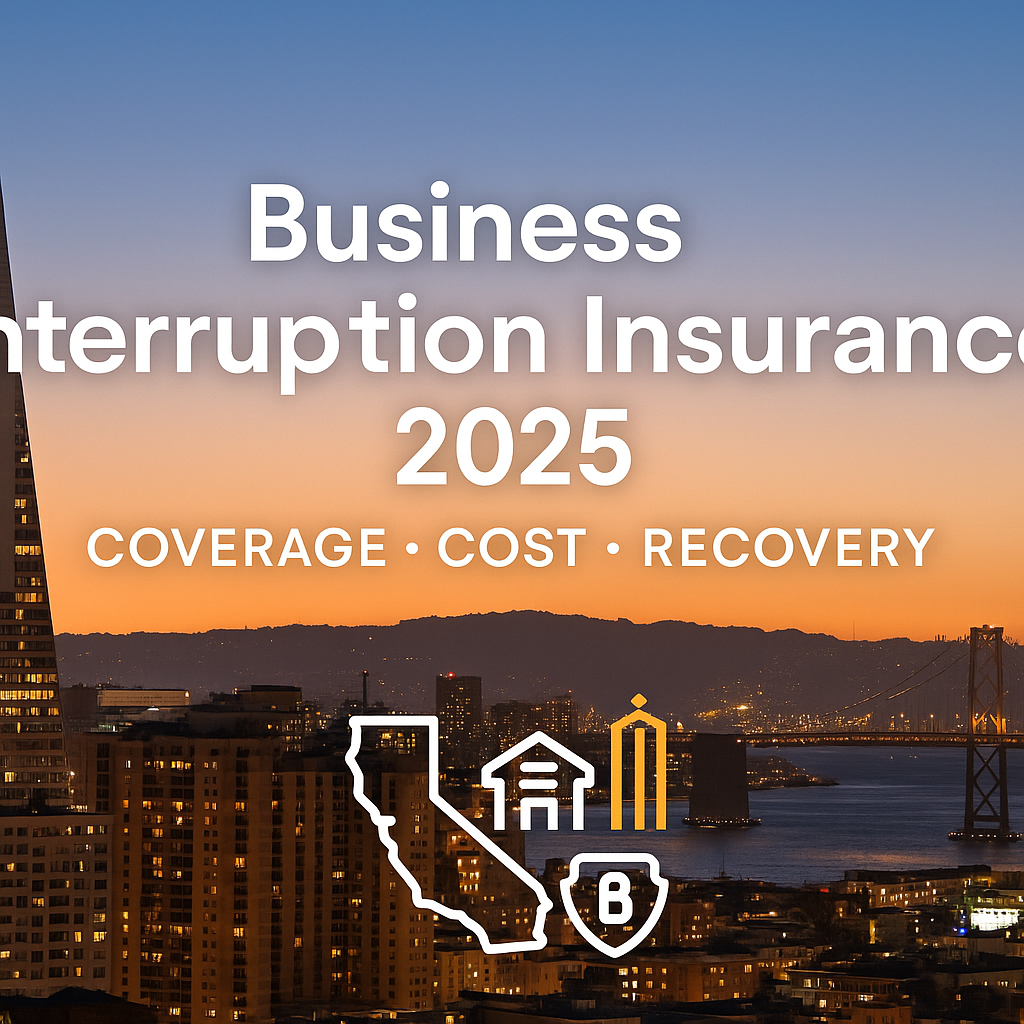California Business Interruption Insurance Cost (2025): Rates & Trends
For California companies in 2025, business interruption (BI) insurance remains a key safeguard against operational shutdowns. Premiums depend on annual revenue, risk class, and location exposure, with averages from $500–$3,000 per $1 million in revenue. This guide explains coverage, triggers, premium formulas, and claim-readiness strategies for California businesses.
1. What is Business Interruption Coverage?
Business Interruption Insurance (BI) compensates for lost income and fixed expenses when a covered event halts operations. It aims to restore your financial position as if no interruption occurred.
- Replaces lost profit and ongoing costs such as rent, payroll, and utilities.
- Usually added to property insurance or included in a Business Owners Policy (BOP).
- May include extra expense coverage for relocation or accelerated reopening.
2. Key Triggers (Fire, Disaster, Supply Chain)
To activate BI coverage, there must be physical damage from a covered peril. In California, triggers include:
- Fire or smoke damage halting operations.
- Wildfire and utility shutdowns—covered under civil-authority extensions.
- Earthquake or flood: excluded by default, add via separate or parametric cover.
- Supply-chain disruption via contingent BI endorsements.
- Government closure orders if nearby damage prevents access.
3. How Premiums Are Calculated
Premiums depend on projected income and exposure. Common 2025 rating factors include:
| Factor | Impact | Example |
|---|---|---|
| Annual Revenue | Higher revenue = higher potential loss. | $2M × $1.50/$1K = $3,000 premium. |
| Business Type | Manufacturing > retail > office risk. | Auto shop ≈ +30% vs accountant. |
| Location | Wildfire/flood zones rated higher. | Ventura > Sacramento. |
| Indemnity Period | 12 vs 24 months = +25–30% cost. | Longer = higher premium. |
| Waiting Period | 72h deductible lowers cost. | 24h = higher rate. |
4. Ways to Reduce Cost
- Continuity planning: 5–10% discount for documented recovery plans.
- Layered coverage: Pair property + parametric wildfire/quake policies.
- Higher deductibles: Extending waiting period reduces cost.
- Bundling: BI under a BOP is cheaper than standalone.
- Loss prevention: Fire suppression and backup systems lower risk ratings.
5. Claim Readiness Tips
- Keep updated financials and expense logs.
- Store off-site backups of insurance and vendor data.
- Track extra costs (rentals, overtime) separately for reimbursement.
- Log downtime accurately to align with waiting-period requirements.
- Contact your adjuster early to confirm restoration timelines.
Frequently Asked Questions
Is business interruption included automatically?
No. It’s usually an add-on to property or BOP coverage. Always verify your policy’s “Business Income” limit and waiting-period terms.
Does BI insurance cover pandemics?
Generally no — standard policies exclude communicable diseases unless specially endorsed. Some carriers now offer limited parametric pandemic riders.
How long does BI coverage last?
Typically 12 months; optional extensions to 18–24 months are available for complex rebuilds. Longer indemnity periods raise premiums proportionally.
Key Takeaways
- Typical 2025 BI cost: $500–$3,000 per $1M revenue in California.
- Physical loss triggers coverage; pandemics remain excluded.
- Rates scale with revenue, risk zone, and indemnity period.
- Continuity planning and risk control can lower premiums.
References
